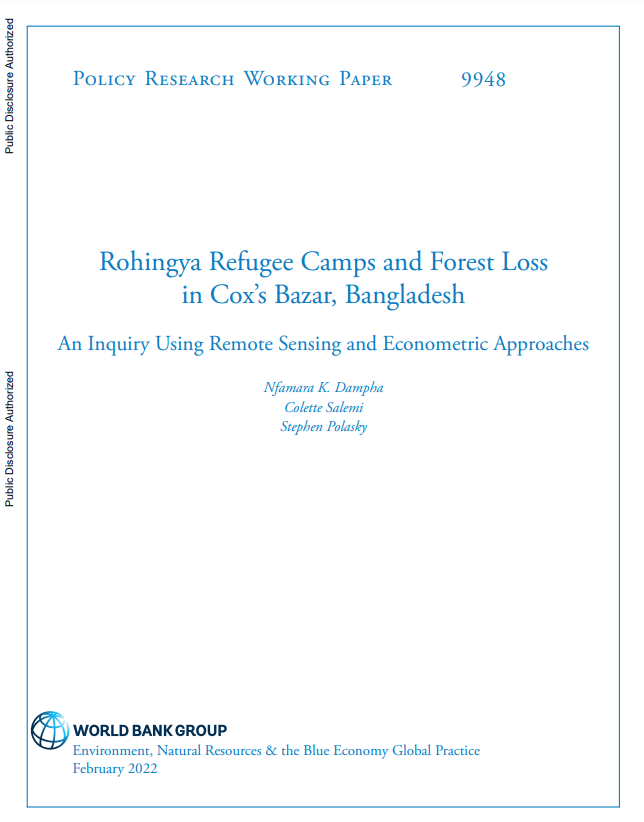Rohingya Refugee Camps and Forest Loss in Cox’s Bazar, Bangladesh; An Inquiry Using Remote Sensing and Econometric Approaches
This paper examines the case study of Cox’s Bazar, Bangladesh, a district that hosts nearly 1 million Rohingya refugees in refugee camps. Using spatially explicit data on land-use / land cover and proximity to a camp boundary, the paper quantifies land-use changes across the district over time.
To evaluate the extent to which the camps triggered additional forest loss, the analysis calculates total forest loss in the district and uses a difference-in-difference model that compares areas 0–5 kilometers from a camp boundary (treatment) to areas 10–15 kilometers away (control). The findings show that the rate of forest loss intensified near camps relative to the control area.
The analysis reveals that areas experiencing camp-stimulated reductions in forest cover are also experiencing faster settlement expansion relative to the control area. Settlement expansion is largely concentrated in areas
outside protected areas. This enhanced settlement expansion still occurs when pixels 0–1 kilometer from the camps are omitted, which is evidence that the results are not due to camp settlements expanding beyond the official camp borders. The results suggest that camps stimulate in-migration as Bangladeshis seek new economic opportunities and
improved access to resources.



